
For many a plant lover, seeing the leaves of a favorite plant turn a color other than green is cause for alarm. After all, leaves are the most visible indicator of a plant’s health.
But when it comes to the jade plant, one color is taking the internet by storm – red.
Jade plant lovers have discovered how to turn the leaves of jade plants red.
Let’s take a look at this hot new houseplant trend.
We’ll discuss how to turn your jade plant’s leaves red and what causes this brilliant hue. I’ll talk about whether or not this is safe for the plant and what to do to return your jade plant’s leaves to their normal color again. Finally, we’ll discuss a couple of leaf colors that aren’t great and could spell trouble for your plant.
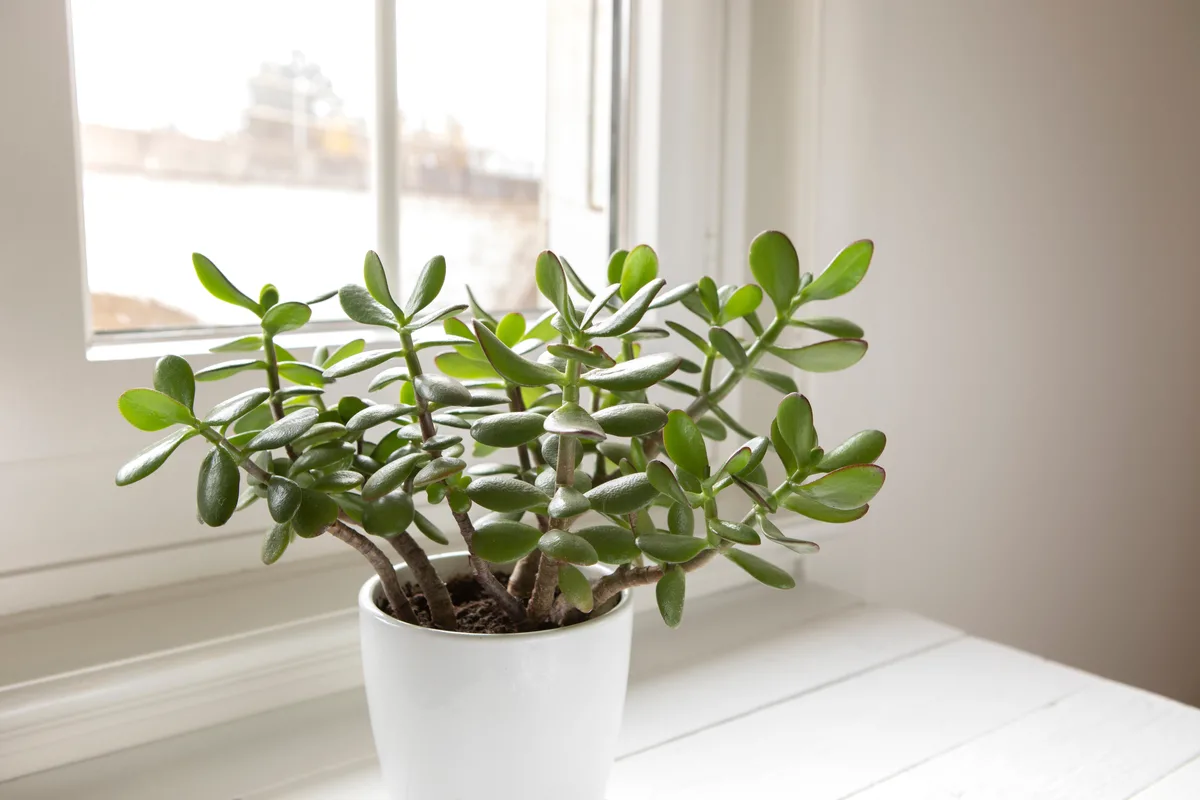
What Makes Jade Plant’s Leaves Turn Red?
Anthocyanin. In the simplest terms, anthocyanins are what make certain plants red, purple or blackish. (Think red cabbage and blackberries.) They’re basically pigmented sugars found within plants.
Grow an entire anthocyanin-filled garden! – 15 Purple Vegetables You Need to Grow
But wait, Tracey, my jade plant is green? Where does the anthocyanin come in?
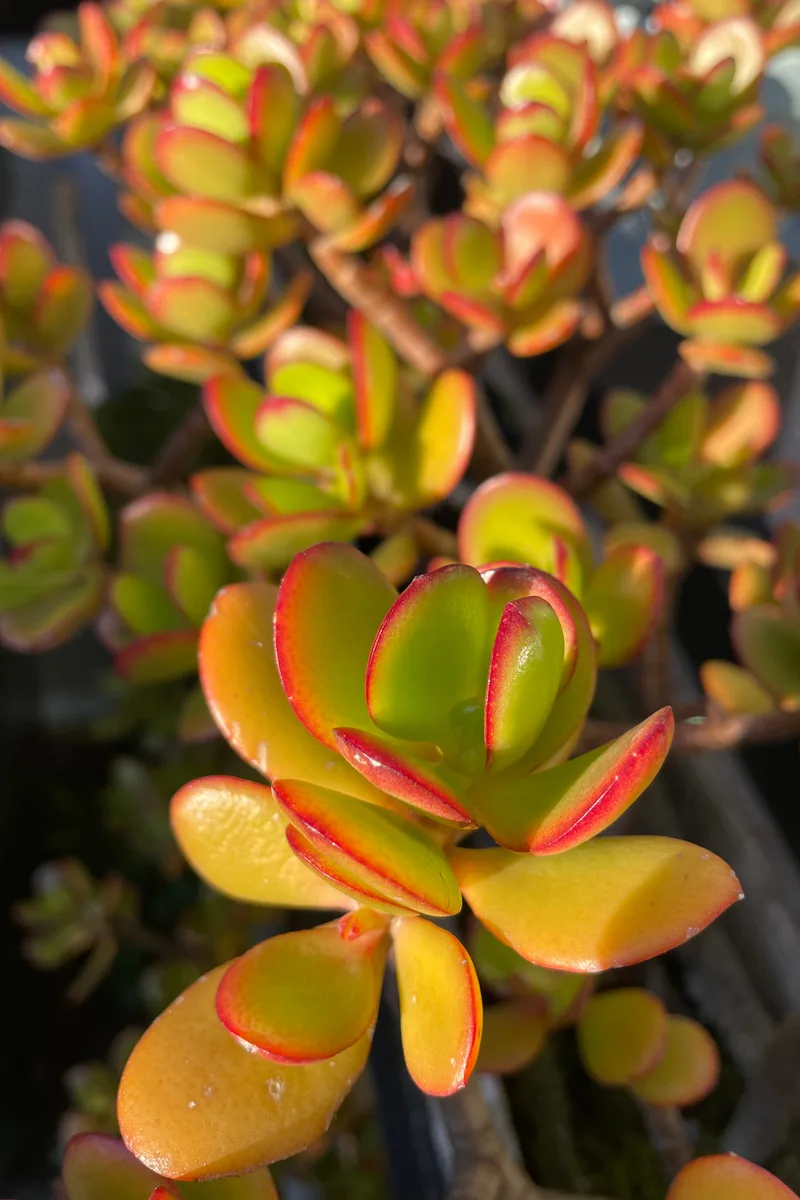
Here’s the big secret, my friends. To turn your jade plant’s leaves red, you need to put your jade in direct sunlight.
The hot, bright light will cause the formation of anthocyanin in the tips of the leaves. The longer your plant stays in direct sunlight, the stronger the red hue will become.
Some jade plant species naturally have a slight reddish tint to the outer edges of their leaves. Just make sure your jade plant gets plenty of direct sunlight to maintain the color.
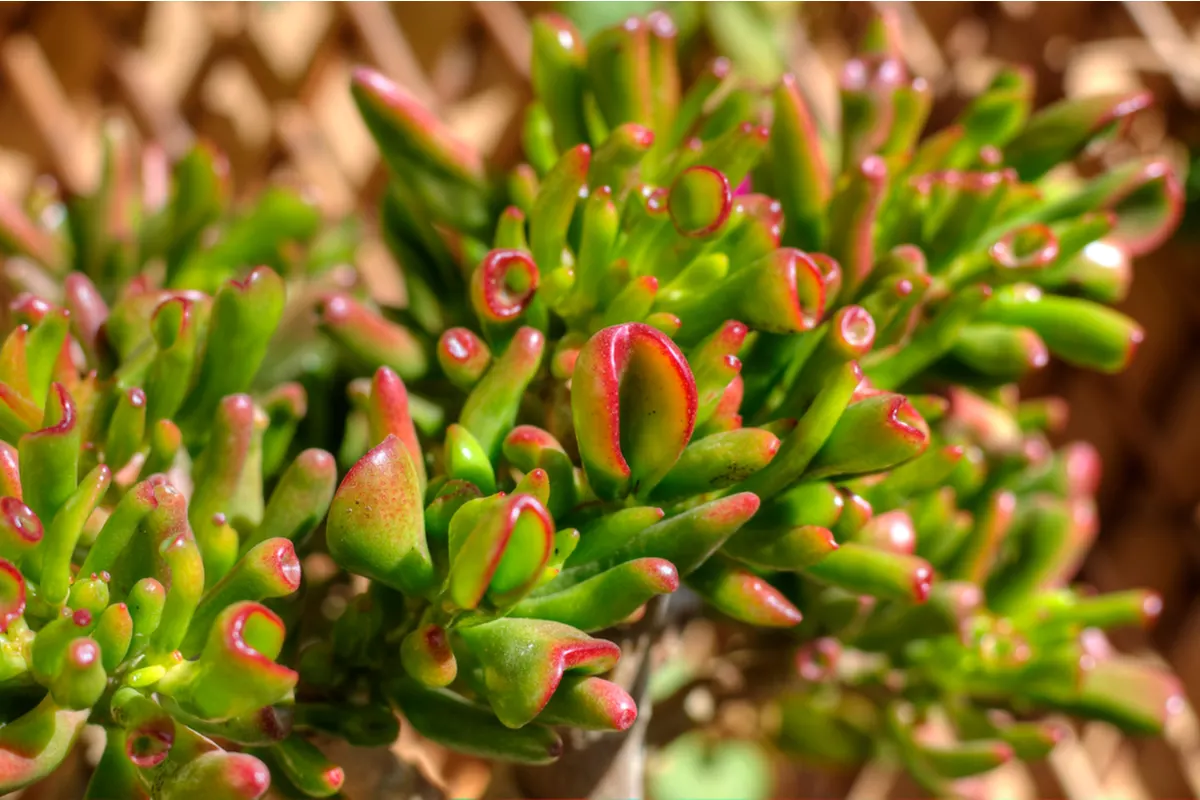
Is Turning Jade Plant Leaves Red Bad for the Plant?
It’s rare in the houseplant care community to be told to put your plant in direct sunlight.
Most houseplants are native to areas of the rainforest where they are sheltered by a larger tree canopy overhead.
There are very few houseplants that can withstand the heat of direct sunlight. In fact, the presence of anthocyanin in succulents is a sign of environmental stress in the plant.
But that’s not necessarily a bad thing.
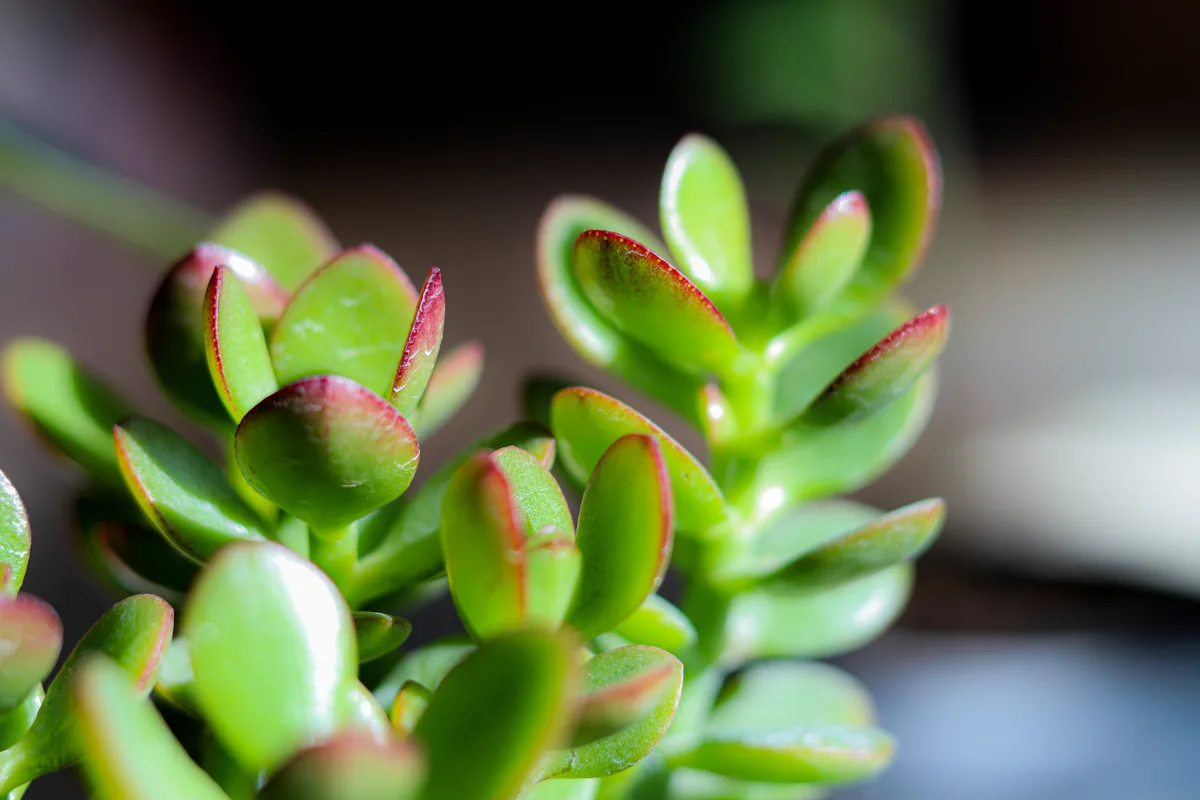
Most of us equate stress as being bad. I mean, after the last couple of years, who can blame us. But not all stress is cause for alarm. For instance, when you exercise, you put stress on your body, and we wouldn’t say that’s bad.
The amount of stress your jade plant is under isn’t enough to cause lasting harm. As long as you’re compensating for the fact that your plant may require more frequent waterings in its hot and sunny location, it should be fine.
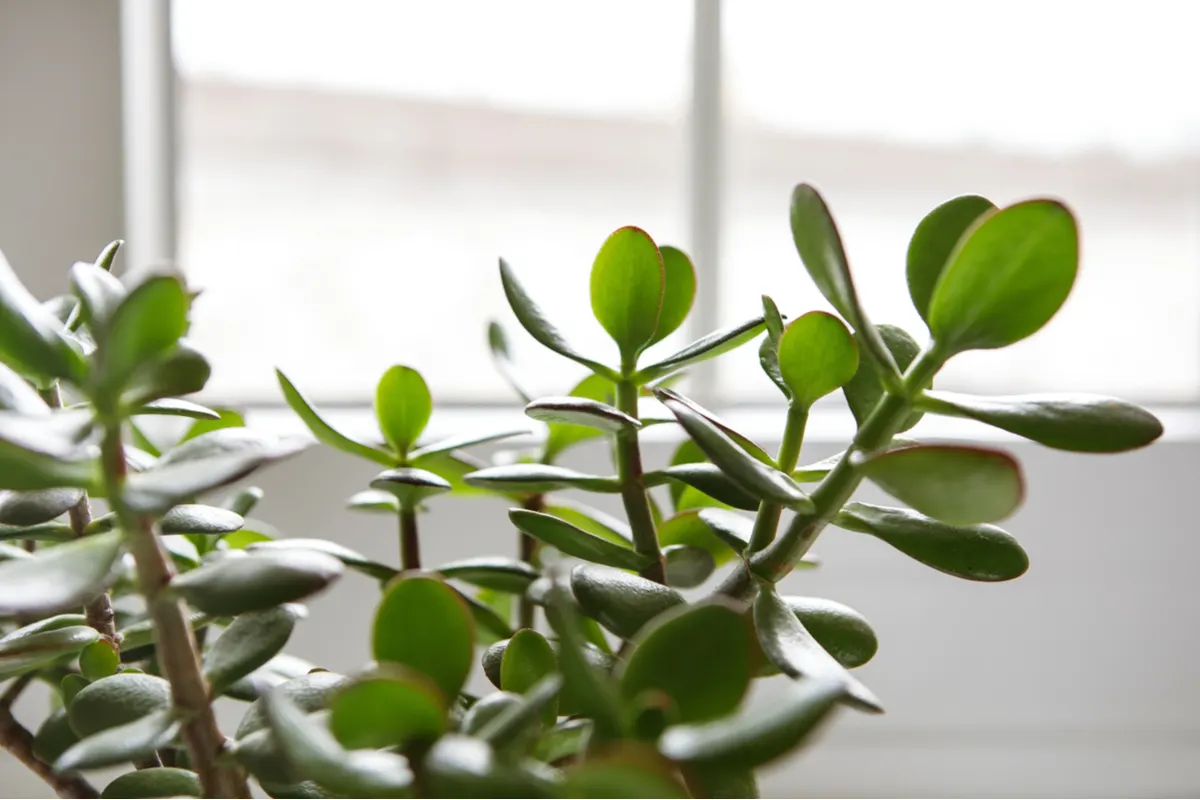
Is it permanent? What if my jade leaves are red, and I don’t want them to be?
The good news about turning a jade plant’s leaves red is that it’s not permanent, and it’s pretty easy to reverse. In fact, by now, you’ve probably already figured out how to fix it.
Yes, that’s right, just move your jade plant out of the direct sun to a spot that gets more filtered or indirect light.
Within a week, maybe two, the plant will lose its rosy hue and return to the traditional green leaves you’re used to.
Pretty cool, right?
What If My Jade’s Leaves Are Yellow?
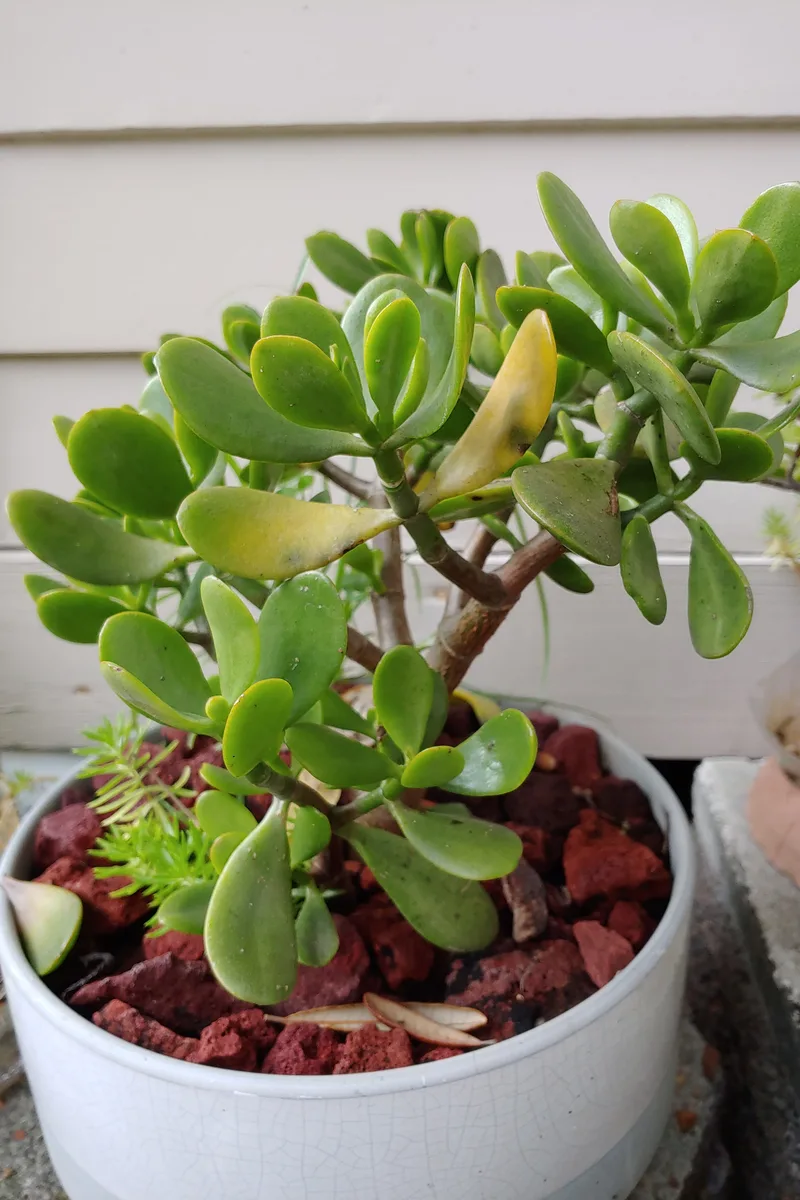
Not green, not red, but yellow. Now, this is a color that is a cause for concern. There are usually three reasons why your jade plant’s leaves are beginning to turn yellow.
- Spider mites – Oh, these pesky little buggers are such a pain to deal with. On top of yellowing leaves, you will also find fine, thin webbing near the interior of your jade plant.
You’ll want to check out my detailed guide on how to get rid of spider mites.
- Over-watering – another issue that will result in yellow leaves is too much water. Stick your finger in the soil and check how damp the soil is. If it’s good and soggy, you’ll want to avoid watering it for a while and let the soil dry out.
- Too much fertilizer – this one is a little harder to diagnose, but if you’ve been fertilizing at every watering or more frequently, the best thing to do is to give your plant a break. Let the jade plant use up the nutrients in the soil, and any subsequent waterings will help flush out excess fertilizer.
What If My Jade Plant Leaves Are Brown?
Brown succulents are sunburned succulents. If your jade plant’s leaves are brown it probably was red at some point. Moving a jade outside in the summer or putting it right up next to a window is often the culprit for sunburn.
Relocate your jade somewhere out of the bright light, and it should improve within a couple of weeks.
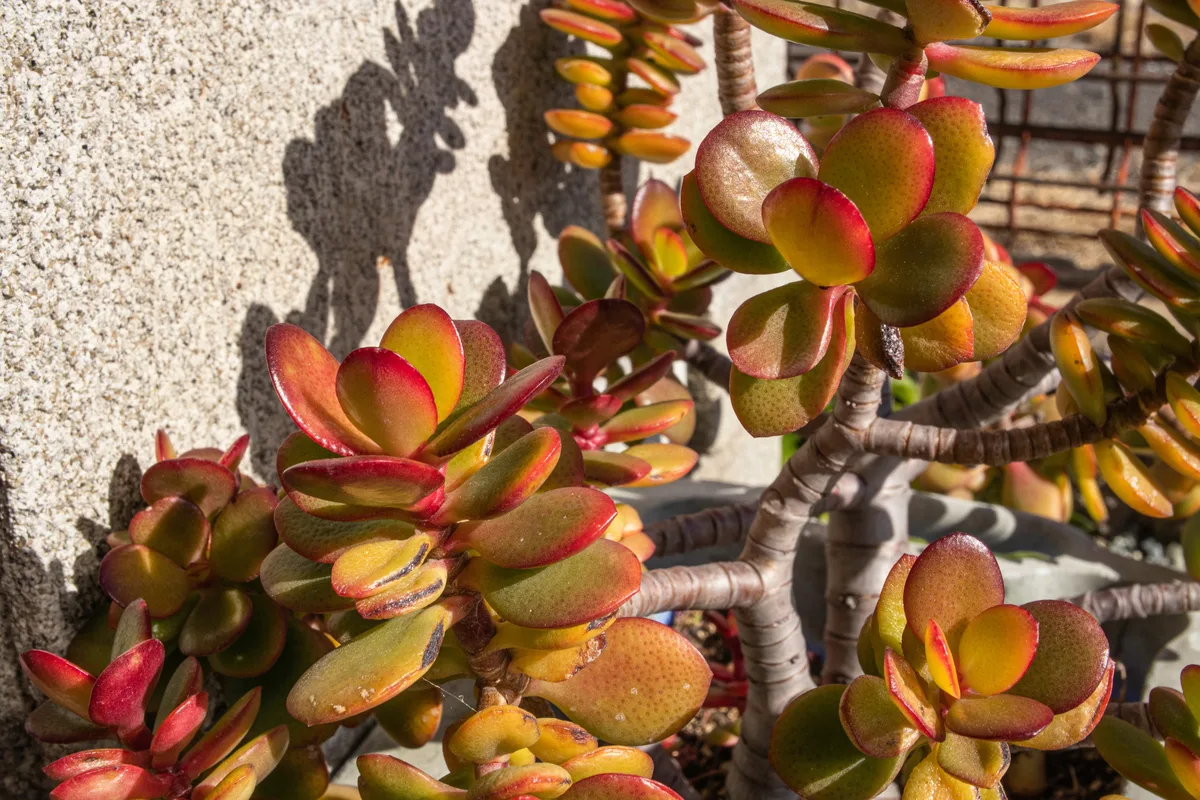
Succulents are fun and attractive plants to care for. And now that you know how to turn your jade plant’s leaves red, you may find yourself periodically moving your plant to enjoy this nifty trick.
With proper care, you’ll be enjoying your jade plant, red or green-leaved, for years to come.
Learn how to prune your jade plant so it grows big and bushy.
How To Prune A Jade To Get A Big Bushy Plant (With Photos!)
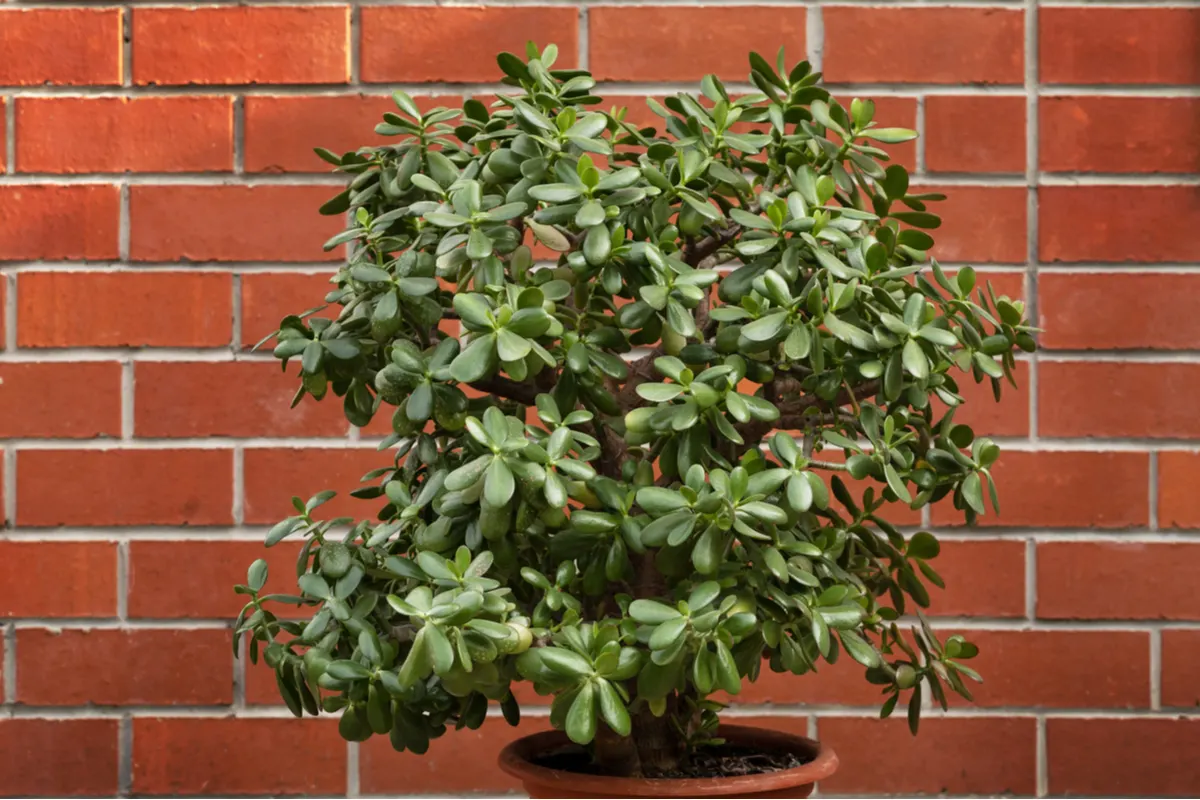
And did you know you can trick your jade plant to send out hundreds of beautiful little flowers.
Take a look at our guide below for doing just that.
How To Get Your Jade Plant To Flower
More Houseplant Articles On Rural Sprout
How to Grow a Beautiful Coffee Plant Indoors
12 Houseplant Mistakes Almost Everyone Makes
12 Beautiful Houseplants That Thrive In Low Light
Hoya Plants: The Total Guide To Growing & Caring For The “Wax Plant”

Get the famous Rural Sprout newsletter delivered to your inbox.
Including Sunday musings from our editor, Tracey, as well as “What’s Up Wednesday” our roundup of what’s in season and new article updates and alerts.

